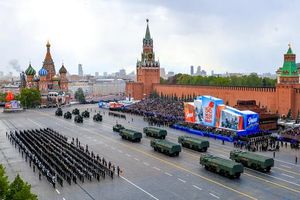On May 9, 2025, Ho Chi Minh City announced significant changes to its administrative structure, revealing that 78 wards will not organize People's Councils (HĐND) following a reorganization effort led by Prime Minister Pham Minh Chinh. This decision is part of a broader initiative to streamline local governance and improve efficiency.
During the morning session of the same day, Prime Minister Chinh chaired a Government meeting focused on reorganizing administrative units at all levels and constructing a two-tier local government model. The meeting highlighted the urgent need for funding to facilitate the retirement of staff affected by this reorganization.
According to the Ministry of Home Affairs, after the provincial-level administrative units were restructured, Vietnam is expected to have a surplus of 4,226 public headquarters across the country. This number reflects the extensive administrative reshuffling aimed at enhancing governance efficiency.
In the same breath, Ho Chi Minh City is also looking to bolster its industrial capabilities. Hepza (the Ho Chi Minh City Export Processing and Industrial Zones Authority) announced plans for a smart industrial park complex to be established in Binh Chanh, a strategic location that serves as the southwestern gateway to the city and connects to the Mekong Delta. The complex will comprise Pham Van Hai I Industrial Park, spanning 379 hectares, and Pham Van Hai II Industrial Park, covering 289 hectares.
On the same day, Hepza, in collaboration with the People's Committee of Binh Chanh district, organized a conference to unveil the planning of Ho Chi Minh City's industrial parks for the period from 2021 to 2030, with a vision extending to 2050. The conference also discussed investment attraction strategies for 2025.
The city's industrial development is being directed towards spatial zoning and selective investment attraction, with the allocation of industries to 14 new industrial parks, including the two Pham Van Hai parks. The overarching goal is to create industry-linked clusters within and between these parks, which will facilitate investor attraction and contribute positively to the socio-economic development of Ho Chi Minh City.
The Pham Van Hai I Industrial Park is specifically oriented towards high-tech industries, featuring specialized sub-zones for electricity, electronics, microchips, and chips. Conversely, Pham Van Hai II Industrial Park is set to focus on precision engineering, machine manufacturing, and automation, aligning with the city's aim to foster advanced manufacturing capabilities.
This industrial cluster is expected to attract projects related to industrial robot manufacturing, CNC technology, and automation equipment for smart factories, all of which are in line with the trends of the Fourth Industrial Revolution.
Additionally, on April 30, 2025, CT Semiconductor, a part of CT Group, commenced phase two of its ATP chip factory in Thuan An, Binh Duong, with an investment nearing 100 million USD. This factory is projected to begin operations in the fourth quarter of 2025, with an impressive production capacity of 100 million chips annually by 2027.
In a related development, Binh Duong and Ba Ria - Vung Tau provinces are set to merge with Ho Chi Minh City, forming a “super city” that will leverage their strengths in industrial production, high technology (especially in chips and semiconductors), logistics, and seaports. This merger is anticipated to further enhance the region's economic landscape.
Furthermore, the city plans to expand its industrial footprint by developing an additional 14 industrial parks, covering a total area of 3,833 hectares. Notable projects include Hiep Phuoc phase 3 (500 hectares), Vinh Loc 3 (200 hectares), An Phu (328 hectares), and several others, all aimed at reinforcing Ho Chi Minh City's position as a leading industrial hub.
In other news, the Prime Minister has also directed the urgent allocation of funds to ensure timely payments for those retiring under the reorganization scheme. This directive aims to ease the transition for employees affected by the restructuring of administrative units.
On the sidelines of the National Assembly, Ms. Nguyen Thi Viet Nga, a delegate from Hai Duong province, discussed the pressing issue of counterfeit milk and functional foods, attributing it to three main factors that have led to the current situation.
Meanwhile, the Ministry of Industry and Trade is actively requesting businesses and industry associations to provide specific data to demonstrate the compliance of key export goods to the United States. This initiative underscores the importance of maintaining high standards for Vietnamese products in international markets.
As Ho Chi Minh City continues to evolve, it remains focused on enhancing its industrial capabilities while addressing pressing social issues. The combination of strategic planning, investment in high-tech industries, and a commitment to improving governance aims to position the city for sustainable growth and development in the coming years.




